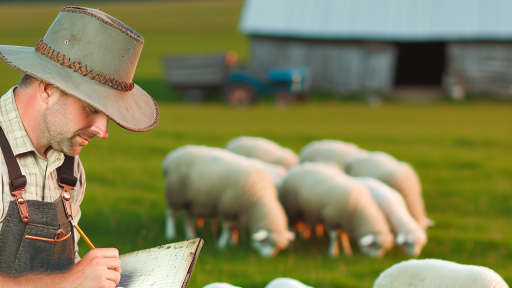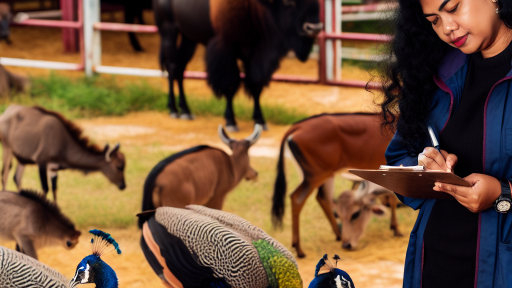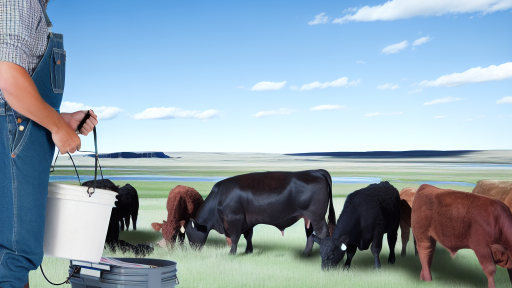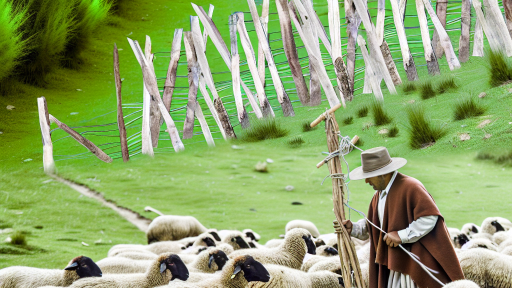Introduction to Livestock Handling Challenges
Livestock handling presents unique challenges for farmers and ranchers.
These challenges can lead to stress for both animals and handlers.
Proper handling techniques are crucial for minimizing risks.
However, many handlers face obstacles in their daily operations.
Understanding Stress in Livestock
Stress in livestock can result from inadequate handling practices.
Animals often react negatively to loud noises and sudden movements.
This stress can impact their overall health and productivity.
Additionally, it can complicate routine tasks such as feeding and milking.
Safety Concerns for Handlers
Handlers must always prioritize their safety during livestock operations.
Injuries can occur due to unpredictable animal behavior.
For instance, sudden movements may lead to falls or trampling.
Training is essential to reduce the likelihood of accidents.
Logistical Challenges in Handling
Logistics play a significant role in livestock management.
Movement of animals between locations can be daunting.
Handlers must consider the layout of facilities and available equipment.
Transform Your Agribusiness
Unlock your farm's potential with expert advice tailored to your needs. Get actionable steps that drive real results.
Get StartedThis can impact the efficiency of daily tasks.
Implementing Effective Training Programs
Training programs can address many of the challenges faced in livestock handling.
These programs should emphasize low-stress handling techniques.
Moreover, ongoing education keeps handlers informed about best practices.
Regular training sessions can improve confidence and skills.
Understanding Animal Behavior and Psychology
The Importance of Understanding Behavior
Understanding animal behavior is crucial in livestock handling.
Animals react differently based on their species and individual personalities.
By recognizing these behaviors, handlers can reduce stress during interactions.
This knowledge enhances both animal welfare and handling safety.
Factors Influencing Behavior
Several factors influence livestock behavior during handling.
These include environmental conditions, health status, and social dynamics.
For instance, overcrowded spaces often lead to increased anxiety.
Moreover, health issues can alter an animal’s typical behavior significantly.
Handlers must consider these factors to create a supportive environment.
Recognizing Stress Signals
Effective livestock management requires recognizing stress signals.
Common signs include vocalizations, pacing, and agitation.
Additionally, watching for avoidance behaviors is essential for safety.
Understanding these indicators helps in addressing the animals’ needs promptly.
Building Trust Through Positive Interaction
Establishing trust fosters a better handling experience.
Handlers can build trust through consistent and gentle interactions.
Positive reinforcement techniques encourage desirable behaviors.
A calm demeanor from the handler also contributes significantly to trust.
Role of Familiarity in Handling
Familiarity plays a significant role in how livestock behave.
Animals tend to be more comfortable around known handlers.
Showcase Your Farming Business
Publish your professional farming services profile on our blog for a one-time fee of $200 and reach a dedicated audience of farmers and agribusiness owners.
Publish Your ProfileThis comfort reduces their stress and enhances cooperation.
Handlers should strive to interact regularly with their livestock.
Utilizing Enrichment for Better Behavior
Environmental enrichment can positively influence animal behavior.
Providing stimulation helps to keep livestock engaged and calm.
Examples include toys, varied feeding strategies, and ample space.
By stimulating their environment, handlers encourage natural behaviors.
Common Physical Challenges in Livestock Handling
Understanding Livestock Behavior
Handling livestock can be physically demanding due to their unpredictable behavior.
Animals often react to stress in ways that are hard to anticipate.
For instance, a startled animal may bolt, leading to injury risks.
Understanding their natural instincts is crucial for safe handling.
Therefore, ensuring a calm environment can mitigate erratic behavior.
Physical Size and Strength of Livestock
The size and strength of livestock present unique challenges.
Large animals, such as cattle, can overpower handlers if not managed correctly.
Handlers must use appropriate tools and techniques to ensure control.
For example, using chutes and panels can enhance safety during handling.
Proper training for handlers is essential to manage animals effectively.
Terrain and Weather Conditions
Handling livestock outdoors can be affected by terrain and weather.
Slippery or uneven ground increases the risk of accidents for handlers.
Adverse weather, such as rain or extreme heat, can impact livestock health.
Providing shelter and proper footing can improve handling safety.
Additionally, handlers should dress appropriately for changing conditions.
Inadequate Equipment
Using inadequate equipment can lead to safety hazards during handling.
Improperly designed handling facilities can stress animals and handlers alike.
Investing in quality equipment can enhance both safety and productivity.
Regular maintenance of handling tools ensures their effectiveness.
Having backup equipment available can mitigate emergencies.
Limited Space for Movement
Crowded spaces can create significant challenges during livestock handling.
Limited movement can cause stress to both animals and handlers.
Designing facilities with ample room can ease handling processes.
Animals need space to move freely, reducing anxiety levels.
Therefore, careful planning of facility layout is crucial.
You Might Also Like: Environmental Impact Of Livestock Waste Disposal
Safety Measures for Handlers and Animals
Understanding the Importance of Safety
Safety is paramount in livestock handling.
Proper safety practices protect both handlers and animals.
Inadequate safety can lead to injuries and accidents.
Handlers should be aware of their surroundings at all times.
Training and Education
Effective training reduces the risk of incidents.
Handlers must receive training on animal behavior.
This understanding helps anticipate animal reactions.
Regular workshops ensure ongoing education for staff.
Showcase Your Farming Business
Publish your professional farming services profile on our blog for a one-time fee of $200 and reach a dedicated audience of farmers and agribusiness owners.
Publish Your ProfileUse of Personal Protective Equipment
PPE is essential for handler safety.
Gloves, masks, and boots minimize exposure to hazards.
Using appropriate equipment prevents injuries from bites or kicks.
Handlers should regularly inspect their gear for damage.
Creating a Safe Handling Environment
Setting up safe handling areas is crucial.
Design pens and chutes to facilitate safe movement.
Ensure gates and equipment function smoothly to avoid accidents.
Maintain cleanliness to reduce slips and falls.
Emergency Preparedness
Always prepare for emergencies to protect staff and animals.
Develop clear evacuation procedures for livestock.
Ensure first aid kits are easily accessible on-site.
Conduct regular drills to evaluate preparedness.
Handling Techniques
Proper handling techniques prevent injuries to both parties.
Use calm and assertive movements when interacting with animals.
Always approach livestock from their side, not directly from behind.
Handlers must remain patient to avoid startling animals.
Monitoring Animal Health
Regular health assessments minimize risks during handling.
Workers should be trained to recognize signs of stress or illness.
Healthy animals are generally more manageable and less dangerous.
Establish routines for monitoring and caring for livestock health.
Communication Among Handlers
Effective communication enhances safety during handling.
All staff members must be aware of each other’s actions.
Establish hand signals or verbal cues to coordinate movements.
Regular team meetings can address safety concerns and strategies.
Explore Further: Innovative Technologies In Waste Management
Innovative Tools and Equipment for Efficient Handling
Automated Livestock Handling Systems
Automated systems streamline livestock management tasks effectively.
They reduce human labor and increase safety for both animals and handlers.
For example, automatic feeding systems deliver precise portions without human intervention.
Additionally, automatic sorting and weighing equipment enhances operational efficiency.
Mobile Handling Equipment
Mobile handling tools provide versatility and convenience on the farm.
Portable panels enable quick assembly of pens and chutes as needed.
This flexibility allows for efficient movement and sorting of animals.
For instance, collapsible livestock gates make transportation and storage easy.
Technological Innovations in Monitoring
Monitoring technologies improve the overall health of livestock significantly.
Wearable sensors help track the health and location of animals in real-time.
These devices alert farmers to any health issues or unusual behavior.
Moreover, data analytics software assists in making informed management decisions.
Advanced Safety Gear for Handlers
Safety gear is essential for effective livestock handling.
High-visibility clothing ensures handlers are easily seen, reducing accidents.
Additionally, gloves and boots keep workers safe from injuries and illnesses.
Showcase Your Farming Business
Publish your professional farming services profile on our blog for a one-time fee of $200 and reach a dedicated audience of farmers and agribusiness owners.
Publish Your ProfileInvesting in quality safety gear promotes a culture of safety on the farm.
Efficient Waste Management Tools
Waste management is a critical aspect of livestock handling.
Innovative tools, like manure spreaders and composters, simplify the process.
These tools reduce odors and improve the overall environment for the animals.
Furthermore, efficient waste management enhances sustainability practices.
Training and Education Resources
Proper training enhances the use of innovative tools in livestock handling.
Workshops and online courses provide essential knowledge to handlers.
Continuing education ensures that staff stays updated on best practices.
Empowered workers will utilize tools and equipment more effectively.
Uncover the Details: Choosing The Right Materials For Livestock Shelters
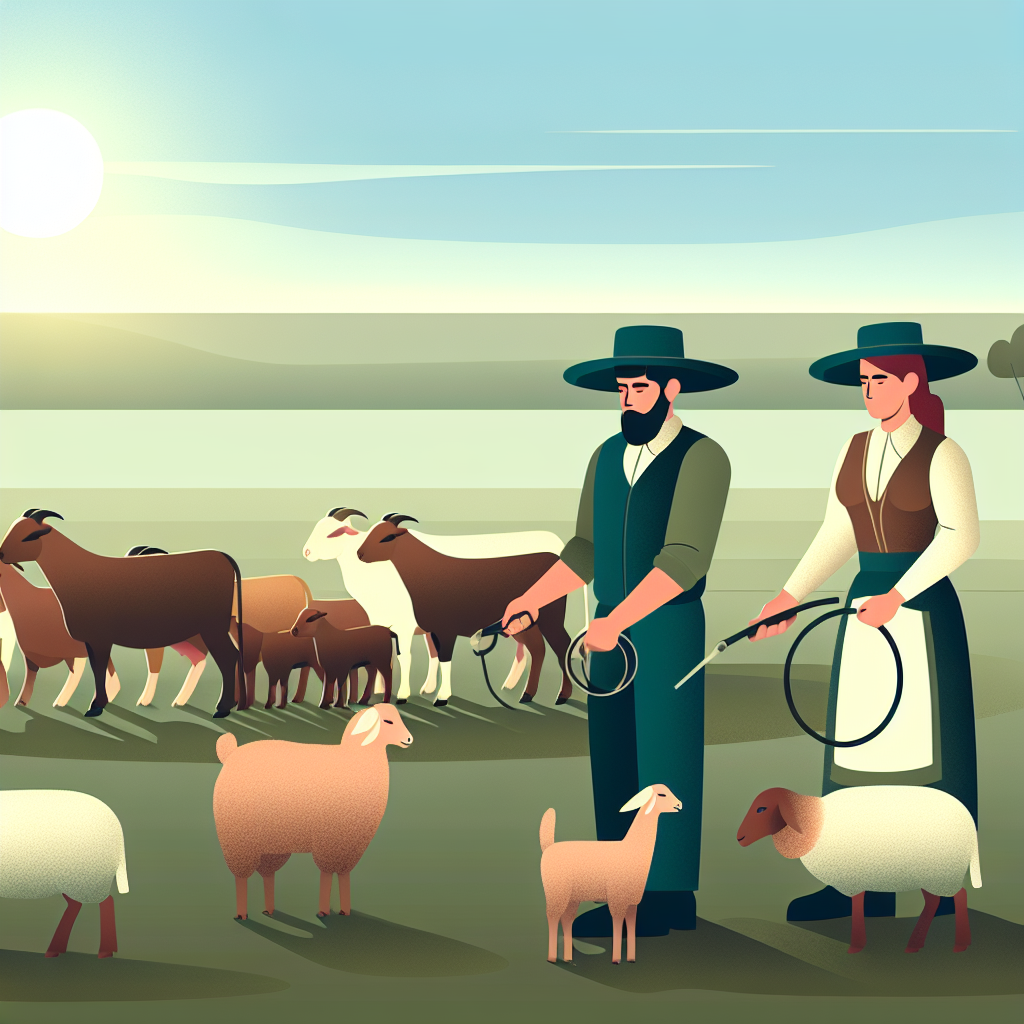
Training Techniques for Livestock and Handlers
Understanding Animal Behavior
Recognizing animal behavior is crucial for effective handling.
Each species has unique predispositions and characteristics.
Handlers should invest time in observing livestock.
This understanding helps prevent stress and injury.
Positive Reinforcement Training
Positive reinforcement motivates animals to learn.
This technique rewards desired behaviors consistently.
Handlers can use treats or vocal praise as rewards.
Building a bond through positive experiences is effective.
Utilizing Low-Stress Handling Techniques
Low-stress handling focuses on gentle approaches.
Handlers should avoid loud noises and abrupt movements.
Calm voices and slow movements help create trust.
Animals respond positively when treated gently.
Implementing Effective Communication
Clear communication between handlers and livestock is essential.
Handlers should use standardized cues for commands.
Consistency in signals lowers confusion for the animals.
This enhances the overall training process significantly.
Regular Training Sessions
Regular training sessions foster familiarity and comfort.
Short, frequent sessions yield better results than longer ones.
Handlers should ensure sessions are engaging and varied.
This approach helps animals remain attentive and responsive.
Involving Professionals
Consulting professionals can provide valuable insights.
Trainers can introduce advanced handling techniques.
They also offer personalized guidance for specific situations.
Investing in expert advice improves overall handling outcomes.
Assessing and Adapting Methods
Handlers should regularly assess their techniques.
Each animal may require different handling approaches.
Adaptability is key to successfully managing livestock.
Feedback from team members can help refine methods.
Discover More: Managing Livestock Manure For Soil Health
Best Practices for Stress Reduction in Livestock
Understanding Animal Behavior
Farmers need to understand livestock behavior better.
Showcase Your Farming Business
Publish your professional farming services profile on our blog for a one-time fee of $200 and reach a dedicated audience of farmers and agribusiness owners.
Publish Your ProfileThis knowledge aids in reducing stress during handling.
For instance, animals react differently to human presence.
Therefore, observing their reactions can guide handlers.
Creating a Calm Environment
A calm environment significantly influences livestock stress levels.
Reducing noise is essential to make animals feel secure.
Moreover, providing adequate space for movement is critical.
Overcrowding can increase anxiety in livestock.
Using Gentle Handling Techniques
Gentle handling promotes trust between livestock and handlers.
Handlers should approach animals slowly and calmly.
Using low-stress techniques minimizes fear and aggression.
For example, avoid sudden moves when working with animals.
Implementing Regular Routine
Establishing a regular routine reduces uncertainty for livestock.
Consistent feeding and handling times create comfort.
Once animals know what to expect, their stress levels decrease.
Providing Adequate Nutrition
Proper nutrition is vital for the overall well-being of livestock.
Malnourished animals are more susceptible to stress.
Providing balanced diets encourages healthy behavior in animals.
Monitoring Health and Well-being
Regular health checks are essential in livestock management.
Healthy animals experience less stress during handling.
Additionally, promptly addressing health issues is crucial.
Using Positive Reinforcement
Positive reinforcement fosters healthier interactions with livestock.
Rewards for calm behavior promote a stress-free environment.
Handlers can use food rewards to encourage cooperative behavior.
Case Studies: Successful Solutions to Livestock Handling Issues
Implementing Innovative Handling Techniques
Innovative handling techniques have emerged within the agricultural sector.
New methods significantly reduce stress levels in livestock during transportation.
For example, Green Pastures Farm adopted a low-stress cattle handling method.
This approach promotes calmness and minimizes injuries among the animals.
As a result, the farm noted a 20% decrease in stress-related illnesses.
Utilizing Technology for Safety
Technology plays a crucial role in improving livestock handling safety.
One instance is the use of GPS tracking devices for transport vehicles.
A local dairy company implemented this technology to monitor location and speed.
Consequently, they reduced accidents during transportation by 15%.
Additionally, this tech allows real-time updates to delivery schedules.
Training and Education Programs
Training and education programs enhance understanding of livestock behavior.
The Rancher Association developed workshops for improved animal handling skills.
These workshops focus on recognizing signs of distress in livestock.
Participants report greater confidence and effectiveness in handling practices.
Moreover, they experience a noticeable reduction in livestock injuries.
Collaboration with Veterinary Experts
Collaboration with veterinary experts can yield significant benefits.
One farm worked with an animal behaviorist to develop a better handling plan.
Showcase Your Farming Business
Publish your professional farming services profile on our blog for a one-time fee of $200 and reach a dedicated audience of farmers and agribusiness owners.
Publish Your ProfileThis partnership identified stress triggers and crafted solutions to mitigate them.
Following implementation, the farm saw improved health outcomes in livestock.
Moreover, veterinary costs decreased due to fewer injuries and illnesses.
Harnessing Community Resources
Community resources can assist farmers in overcoming handling challenges.
In one case, a cooperative provided shared resources for equipment rental.
Moreover, access to livestock trailers eased the transportation process.
As a direct result, farmers reported improved handling efficiency and reduced costs.
Community workshops, focused on best practices, also added value.
Additional Resources
Precision Agriculture: Benefits and Challenges for Technology …

